






Physics - What is it?
And Why Should I Care?
Forces and Motion
Big Idea – We can predict the position and movement
of anything by considering forces acting on it.
Conservation of Momentum and Energy
Big Idea – Momentum and energy can’t be destroyed but can be transformed.
Temperature and Heat
Big Idea – Temperature is atoms in motion.
Fluids: Liquids and Gases
Big Idea – Fluid physical properties depend on temperature and pressure.
Electromagnetic Spectrum
Big Idea – Moving electrons explain everything.
Optics
Light bounces and bends to form images.
Modern Physics
Big Idea – The atomic world plays with different rules.
‹
›


What is NASA Physics? And Why Should I Care?
 Physics is probably the hardest course taught in high schools, accounting for the fact that only about one-third of American students typically take it. Physics is full of challenging and amazing new ideas, but students are afraid, disinterested, and stay away in droves.
Physics is probably the hardest course taught in high schools, accounting for the fact that only about one-third of American students typically take it. Physics is full of challenging and amazing new ideas, but students are afraid, disinterested, and stay away in droves.
That is more than a shame, it is a national catastrophe. Physics is the gateway to all modern technology, and our country desperately needs more scientists and engineers to remain economically competitive with the rest of the world. All of the digital technology – cell phones, computers, GPS - that we personally use everyday derives from discoveries of modern physics. And the reason that airplanes fly and spacecraft reach correct orbits depends on classical physics. Students who leave high school with a basic understanding of these topics will be ready for college courses that lead to careers in exciting and high paying jobs of the future. In fact, according to the American Institute of Physics, 93% of college students who receive a physics BS degree took physics in high school, as did 92% of physics graduate students. High school physics is the gateway to producing physical scientists for America, and finding a rewarding career.
NASA Physics was created to encourage more high school students to gain some exposure to physics. It is designed as a one-semester elective course, just as Astronomy, Earth Science and similar topics often are. By being normally taught only as a yearlong laboratory course, fewer students take physics than if a shorter version were available – now one is.
As a one-semester elective only some of the topics typically covered in a yearlong physics course can be included. That is excellent. As the recent Framework for K-12 Science Education advocates, a few big ideas should be taught rather than every minute detail. The mere size of standard high school physics textbooks is intimidating – 944 pages for one widely used text!
NASA Physics does two things. As the name implies it uses the examples from NASA’s exploration of the Earth and cosmos to raise the level of interest and, hopefully, excitement about physics. Secondly, NASA Physics is short, selecting the most important big ideas so that students come away understanding them even if they may not have been exposed to every detail commonly jammed into a normal textbook. NASA Physics is also meant to startle sometimes; to be unlike a textbook in using natural ways of communicating including jokes and humor – at least we think its funny…
Physics is math. Physics is a science that develops mathematical models to explain and predict how things work. If the math prediction does not agree with observations then the understanding is incomplete. Physics is self-correcting. Fortunately, a lot of important physics theories only require algebra, and so that is used in NASA Physics. Don’t let the equations in the Forces and Motions modules scare you away. Look at the equations – they just multiply terms together or divide them or add or subtract them. You can do that.
NASA Physics is designed as a series of related modules. Each of the seven modules – equivalent to chapters in books – can stand independently of the others, so an instructor may select parts that they especially like and use additional sources for other content.
NASA Physics is not a complete curriculum package. It doesn’t include labs, although it does contain some interactive simulations of principles and does link to other useful existing simulations. Teachers may want to use NASA Physics as the defining document for a course, supplemented with other textbooks, online materials, and labs. Commercial virtual labs can replace classroom labs. And many of the free simulations at PhET Interactive Simulations (http://phet.colorado.edu) have teacher-designed labs associated with them.
NASA Physics brings teachers a new approach – one semester of big ideas – and a new content area – NASA exploration. Ideally, students will come away with a delight in science learning that influences their future education pathways.
Who Did What
Charles A. Wood, Author
Lou Mayo, Author
Meri Cummings, Contributor
Cassie Lightfritz, Graphic Designer
Chris Ruckman, Programmer
NASA, Funder
Dan Burns, Reviewer
Dave Goodwin, Reviewer
Reviewer Comments
I found NASA Physics to be an excellent introduction to the big ideas in Physics. The combination of graphics, text, and on-line links has the potential to attract every student and encourage them to further their study of Physics. Designed as a one-semester course, the individual modules can also be used as extensions and supplements for any Physics course.
David Goodwin
Retired WV Chemistry/Physics teacher
NASA Physics is an interesting narrative written in an engaging style. It contains many interactive features that will hold student interest. It introduces students to many things they may not get in even a year-long physics course. It connects the physics to many current NASA and other science topics. It will benefit students taking a physics class or those who can't wait to take one. The modular approach allows students and teachers to pick and choose what suits their current interests. Its suggested one semester length allows for students to fit it into their busy schedules.
Dan Burns
AP Physics Teacher since 1992
Los Gatos High School
Los Gatos, CA
© 2013 by Wheeling Jesuit University/Center for Educational Technologies®. 316 Washington Ave., Wheeling, WV 26003-6243. All rights reserved. Privacy Policy and Terms of Use.

